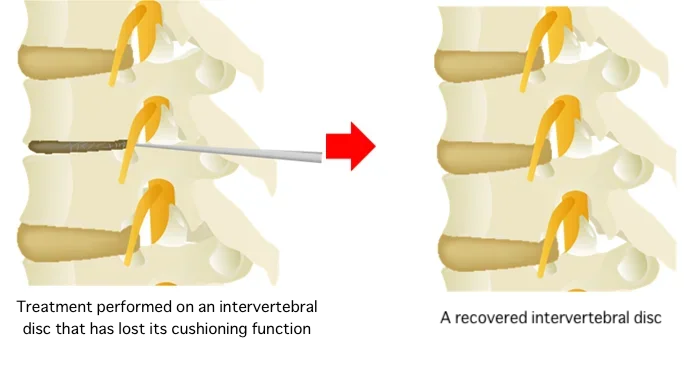October, 6, 2023
Spinal stenosis is a condition in which the spinal canal through which the spinal cord passes narrows, putting pressure on the nerves.
It often occurs in middle-aged and older people, and is diagnosed in about 10% of the population. *1
Spinal canal stenosis not only causes lower back pain, but also symptoms of pain and numbness in the lower limbs, and intermittent claudication (pain in the buttocks and legs occurs when walking, but it eases after resting, and then the pain returns when walking again). This can interfere with daily life.
*1 Reference source: Hiroshi Hashizume, Noriko Yoshimura, Hiroshi Yamada, Muneto Yoshida “Epidemiological indicators of age-related degenerative diseases of the spine and their relationship to motor function—The Wakayama Spine Study” Physical Fitness Science, Vol. 65, No. 1, 2016
Treatment of Spinal Stenosis – Surgery
Lumbar spinal canal stenosis can sometimes be treated with block injections, but the more severe the symptoms such as pain and numbness, the more surgical operation is performed.
Surgery for spinal stenosis
Common surgeries for spinal stenosis include lumbar laminectomy and spinal fusion.
Lumbar laminectomy is performed under general anesthesia using an endoscope. The skin on the back is incised, part of the vertebral arch and the thickened ligament flavum are removed to relieve pressure on the nerves and the spinal column and the spinal cord is widened.
In spinal fusion surgery, under general anesthesia, an incision is made in the skin of the back, the degenerated disc is removed, a cage filled with bone taken from the hip bone is inserted, and the vertebrae are fixed using screws and rods. It may also be performed after lumbar laminectomy.

Spending time after the surgery
Spinal surgery requires a period of hospitalization. Hospitalization may be required for as little as one week, and in some cases for two weeks. The more areas that are operated on, the longer the hospital stay.
The day after surgery, your recovery will begin by checking your movements, such as getting up from bed and sitting, and if the postoperative progress is good, you will be able to start practice walking and perform daily activities.
For the first two weeks after surgery, you will practice simple movements while wearing a corset.
Two weeks after surgery, you will be able to work at a desk or drive a car.
It is not recommended to do heavy labor until 2 months after surgery, and you can start riding a bicycle or running 3 months after surgery.
It is generally fine to participate in sports 3 months after surgery, except for strenuous sports that involve bumping your body or falling.
Treatment of spinal canal stenosis – Intervertebral disc treatment
Spinal canal stenosis occurs when an intervertebral disc cracks, causing the central component to protrude, and the protruding portion narrows the spinal canal. If the crack in the disc is not repaired, there is a possibility that the disc will herniate again or the spinal canal will become narrowed again.
With our clinic’s Cellgel method, we inject a liquid that fills the cracked part of the intervertebral disc, which eventually turns into a gel that fills and repairs the crack. This treatment makes it possible to perform fundamental treatment. The disc volume does not decrease, and the liquid remains in the disc as a gel-like implant after treatment, so the disc is preserved.

How to spend time after the treatment
You can go home 1 to 2 hours after treatment.
From the day after treatment, you can go about your daily life by doing light movements, being careful not to do movements that put strain on your lower back.
It is okay to go to a hot spring after 3 days of treatment, and we also recommend walking around a pool after 3 days, which is less stressful on your lower back.
Massage and rehabilitation exercises may begin 7 days after treatment.
You may start practicing yoga 14 days after treatment, but you should refrain from playing golf, sports, or heavy labor for about a month.
If you have been diagnosed with spinal canal stenosis and are concerned about it, or if you would like to avoid spinal surgery, please consider having a consultation at our clinic.



